Afro Hair Transplant in Turkey
Restore your natural curls and hairline with expert care designed for Afro hair. Achieve long-lasting, natural results with our specialised techniques.
Experience Since 1994
VIP Service
Natural Results
Certified Surgeons
Afro Hair Transplant Treatment Overview in Turkey
Afro hair transplant procedures in Turkey are designed for curly and coiled hair types, focusing on natural density, hairline precision, and long-lasting results.
- Average Length of Stay: 2–3 Days
- Procedure Duration: 5–8 Hours
- Anaesthesia Type: Local Anaesthesia
- Technique Used: FUE or DHI
- Return to Daily Life: Within 2–3 Days
- Healing Process: Gradual and Controlled
- Result Appearance: Natural Texture and Curly Pattern
- Result Permanence: Permanent Solution







See real Afro hair transplant results and find out if this treatment in Turkey is right for you with a free consultation.
Afro Hair Transplant Before and After Results
See how our patients regained natural volume, texture, and confidence with Afro hair transplant procedures performed by expert surgeons in Turkey.
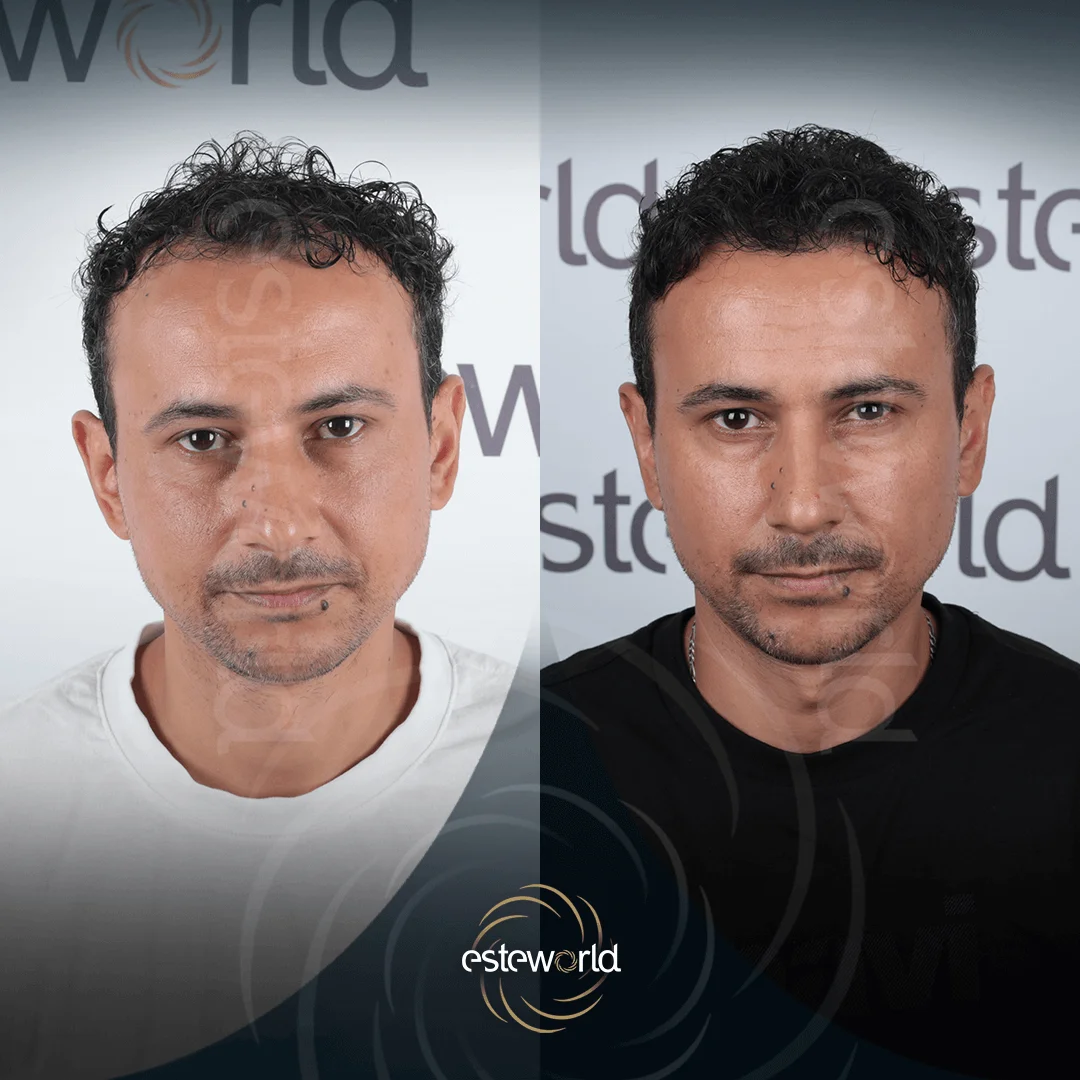
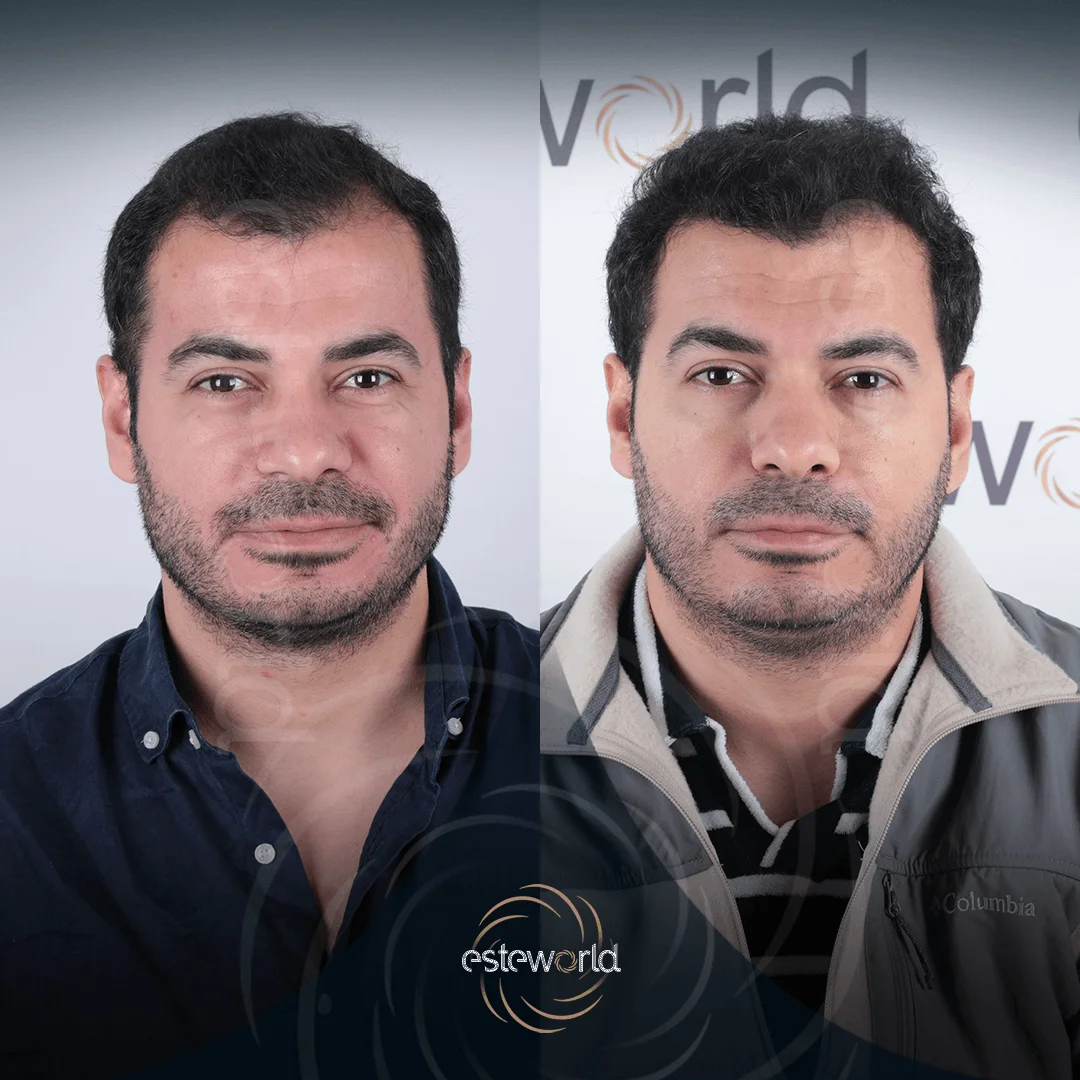

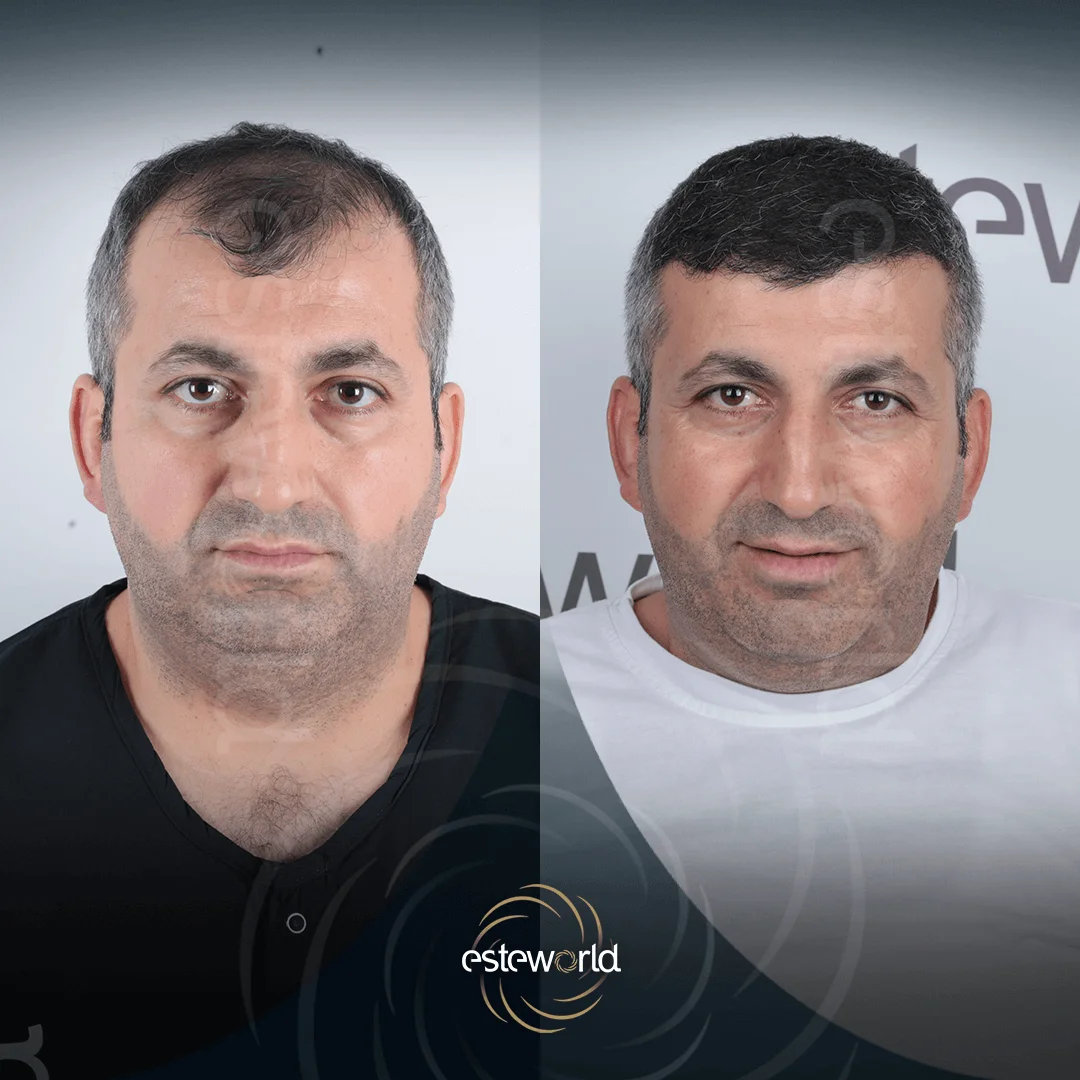
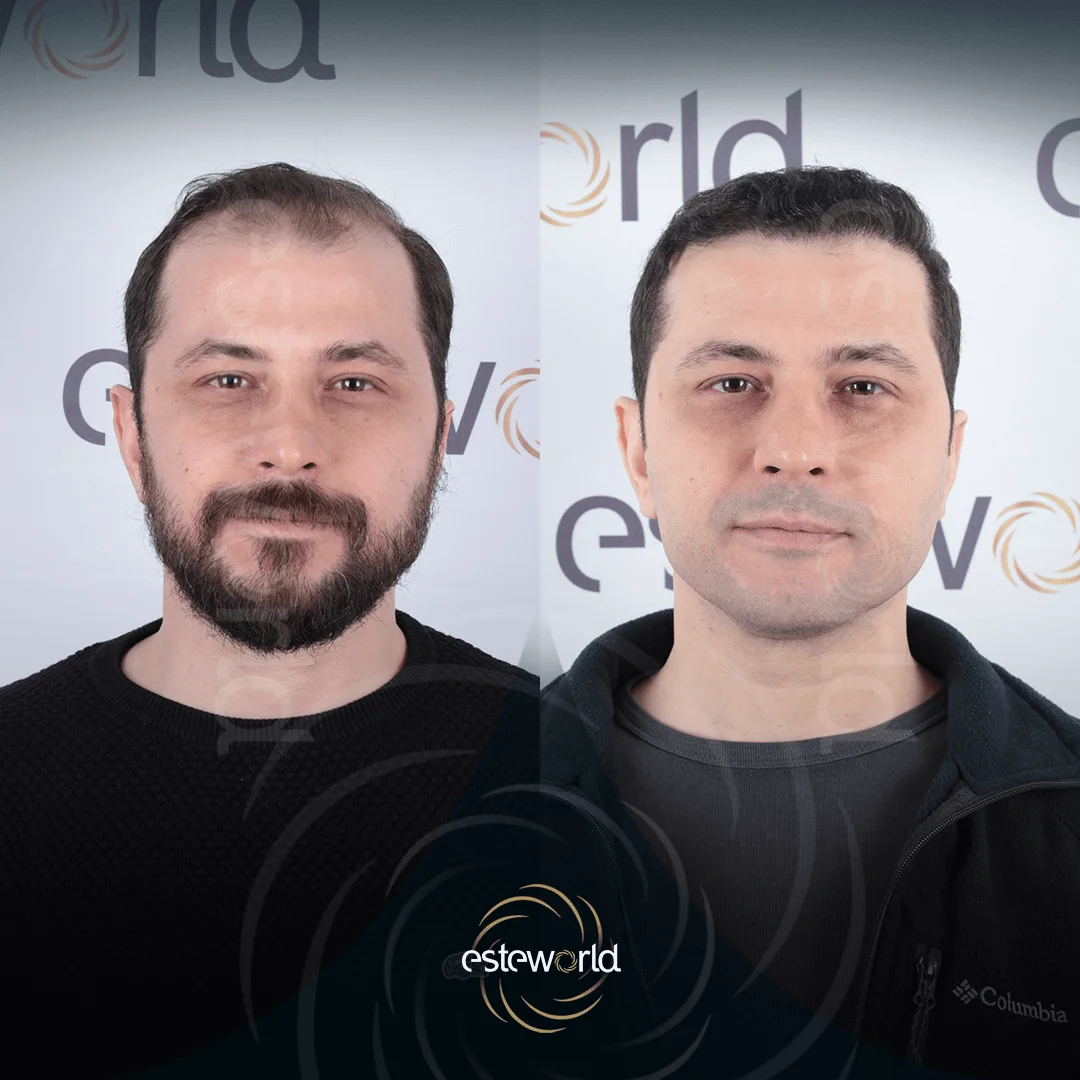
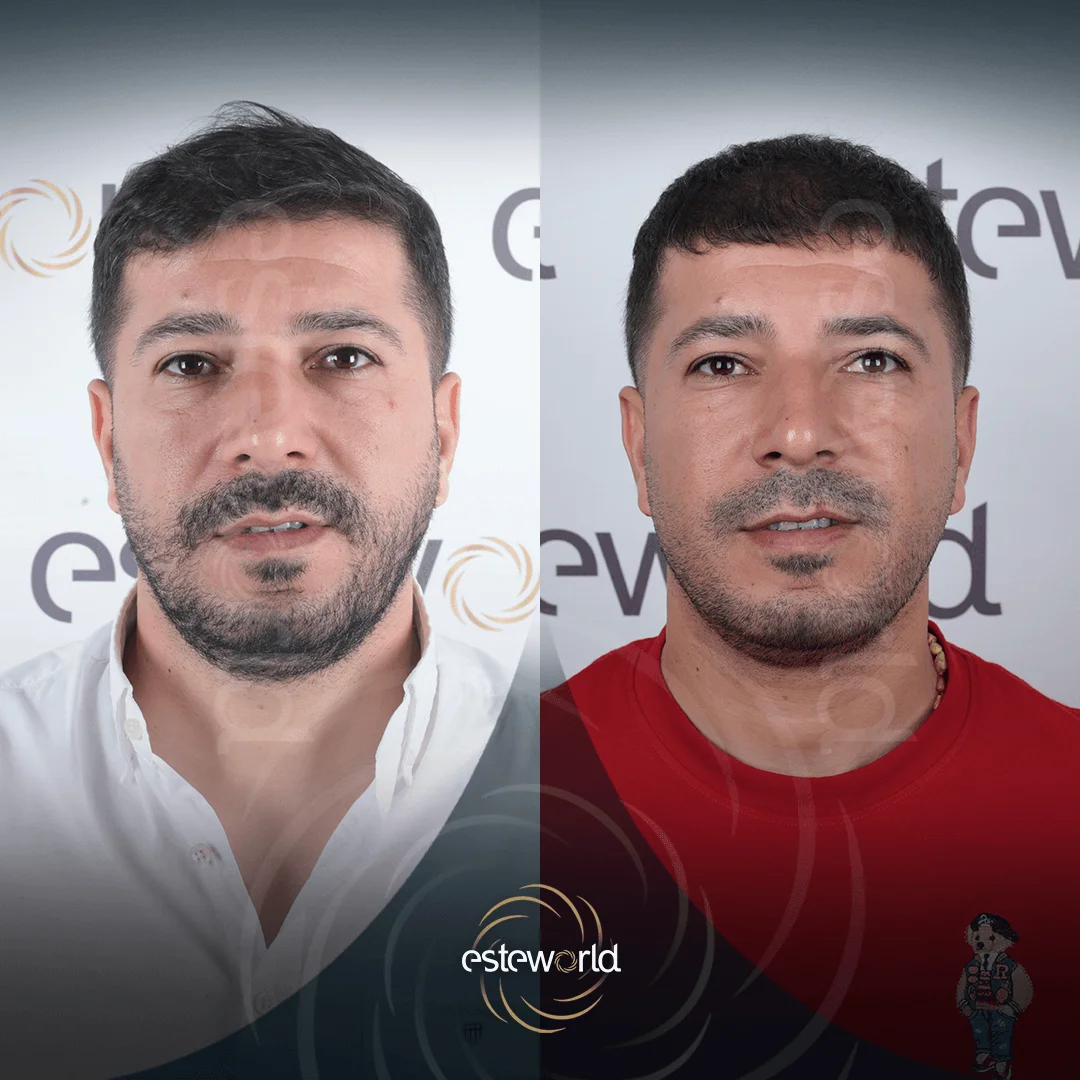
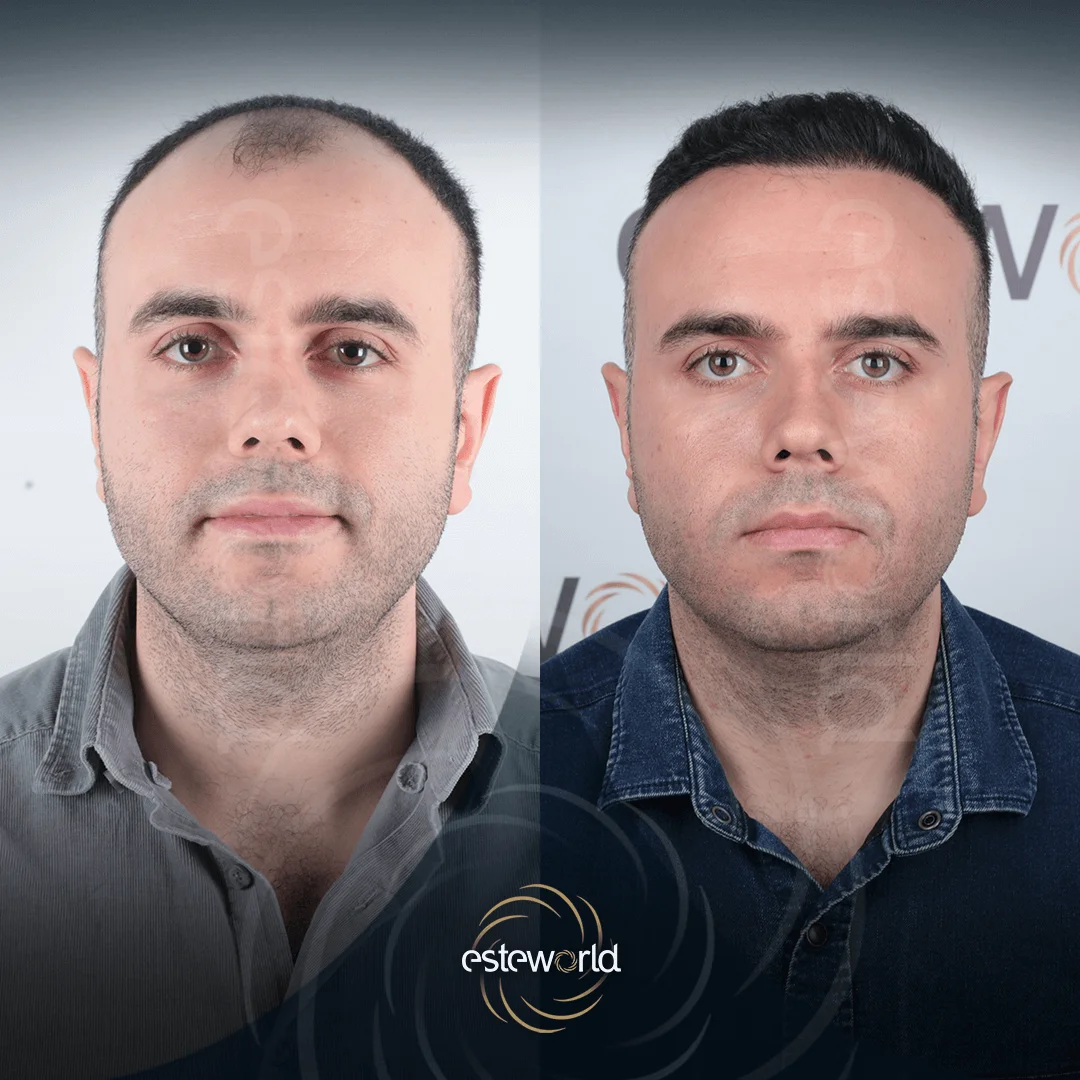

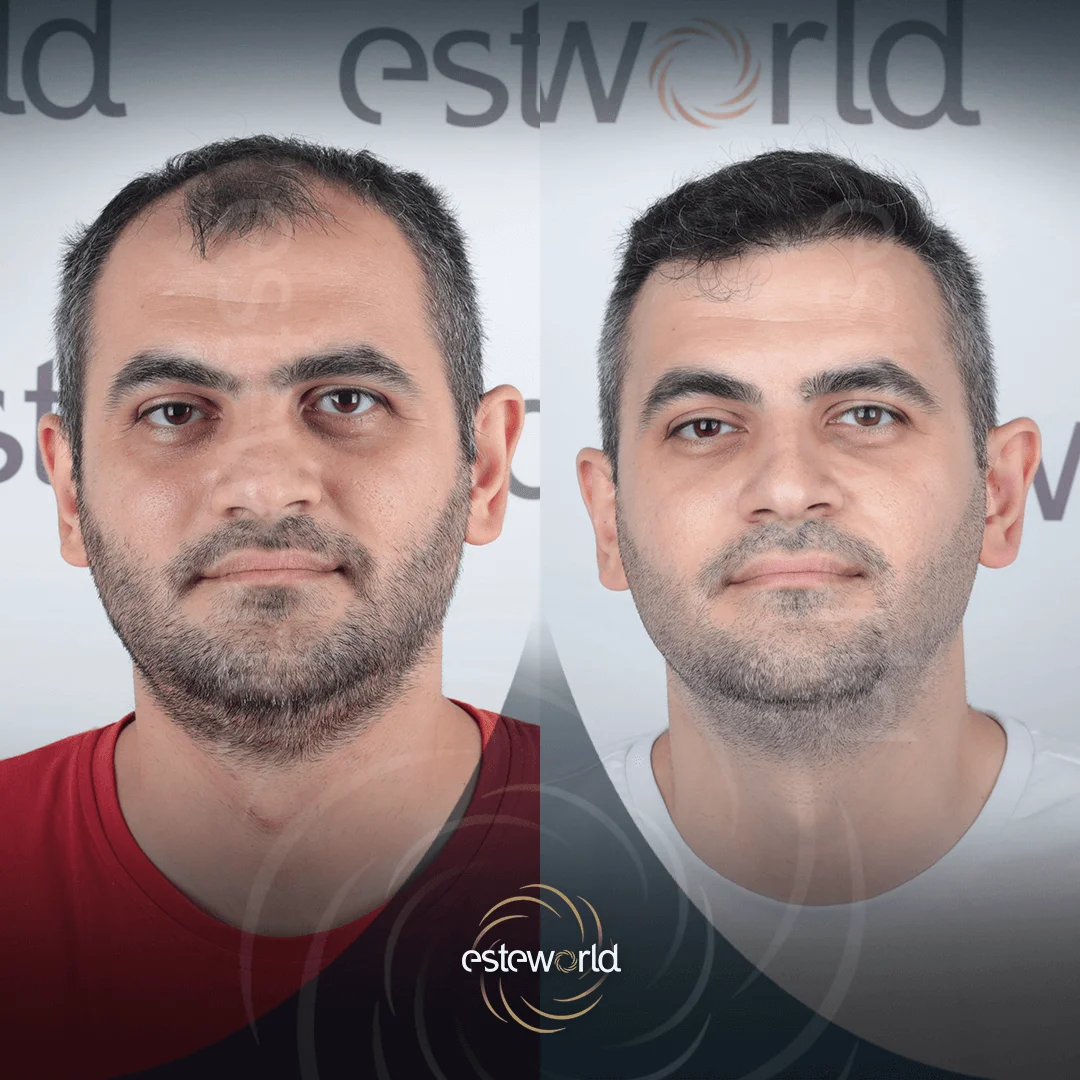
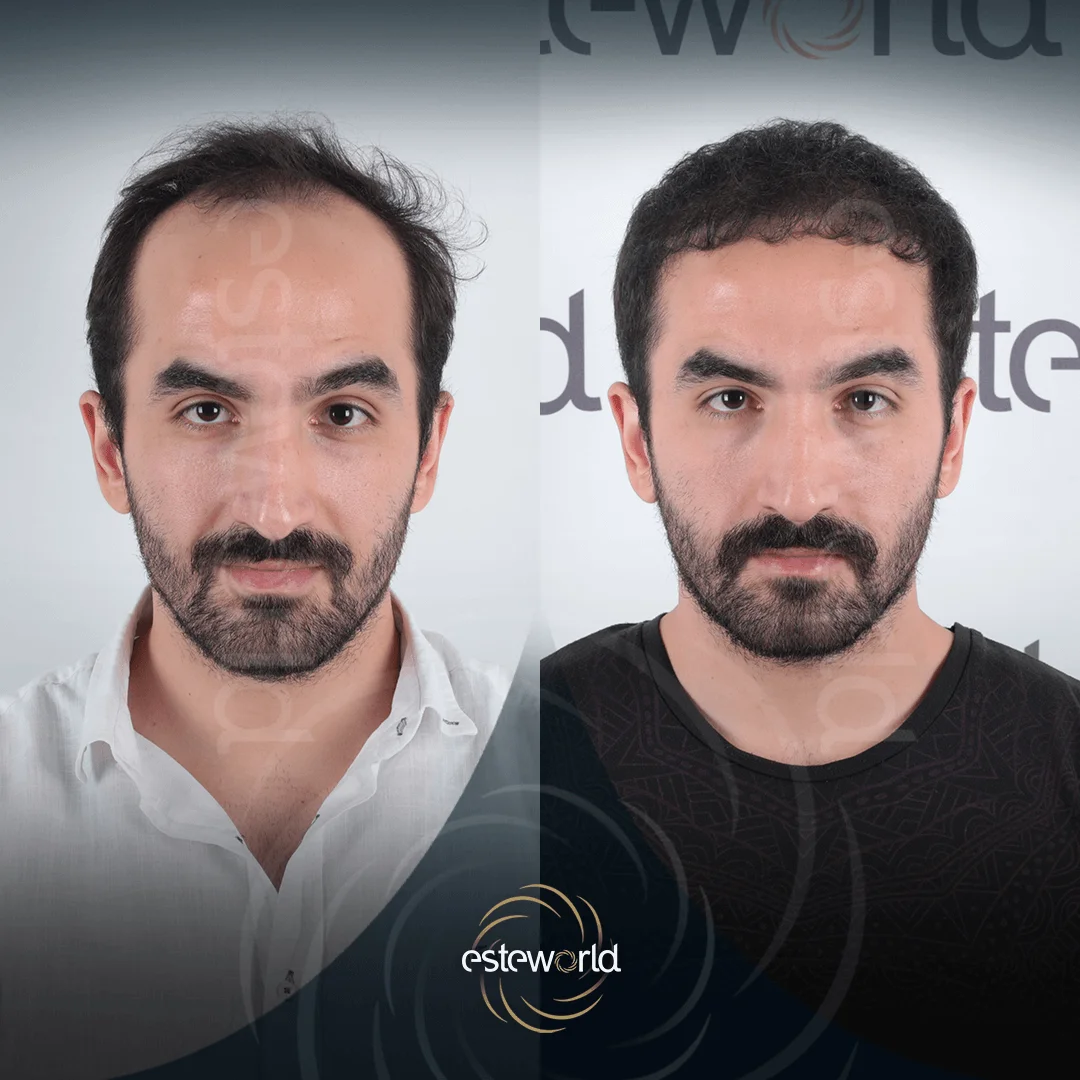
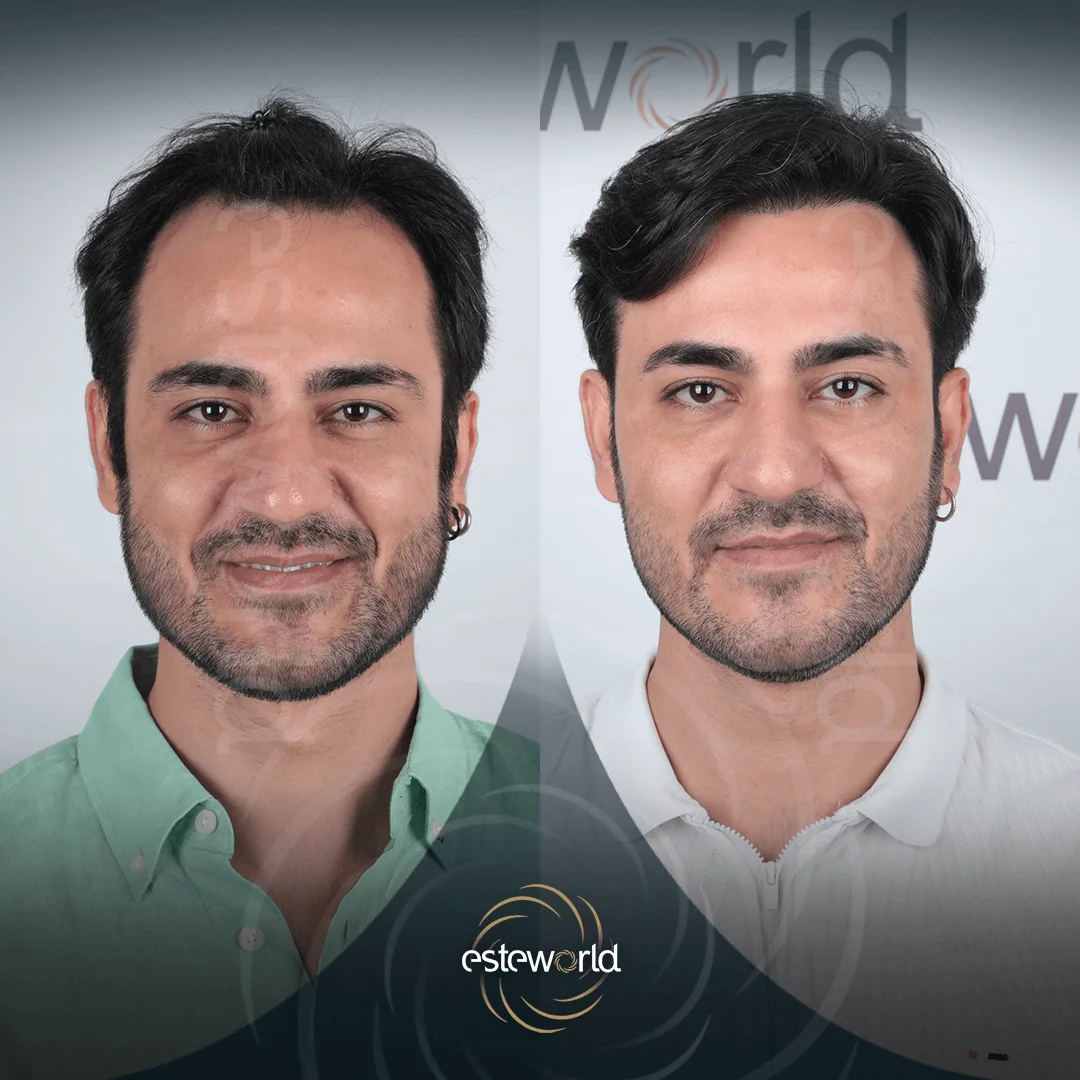
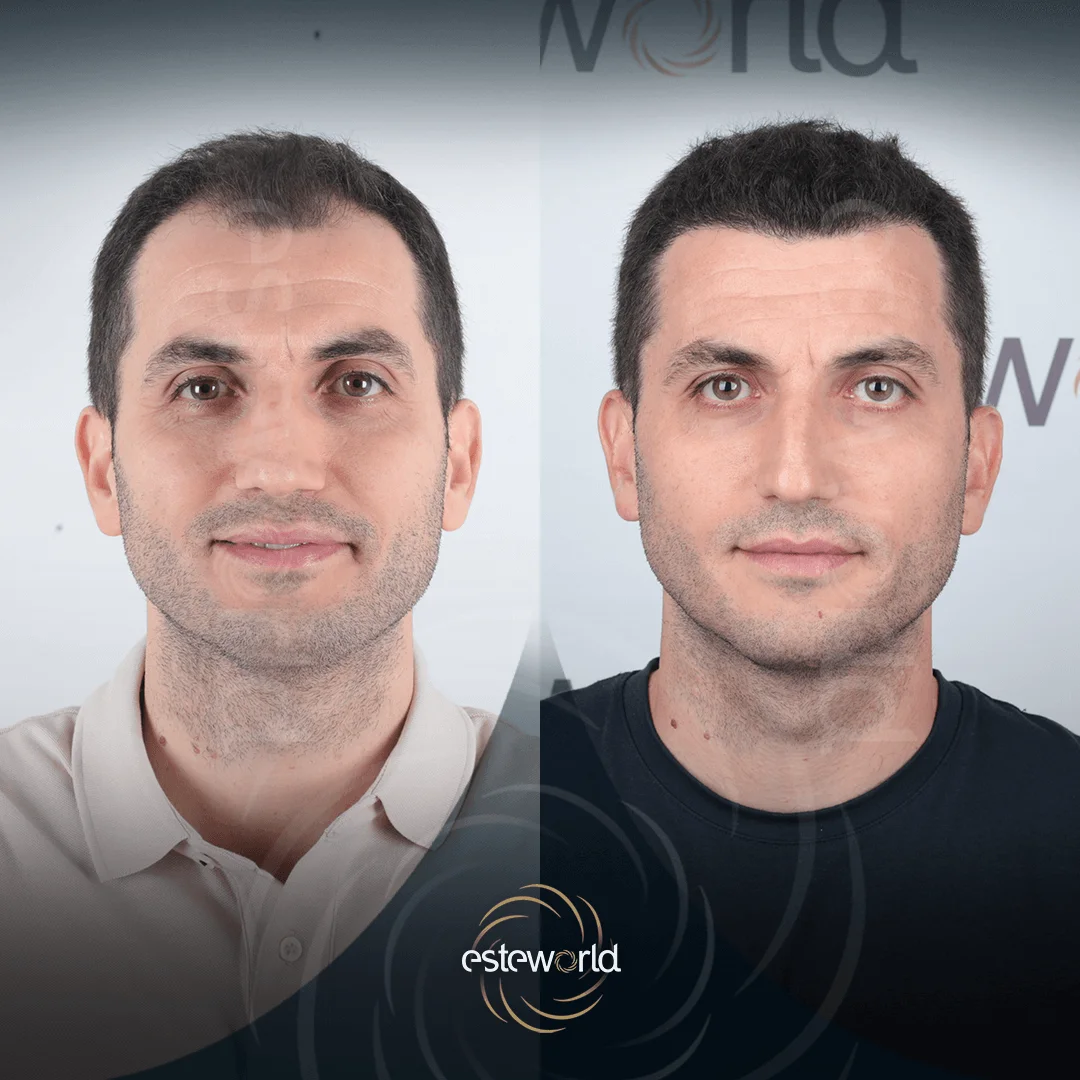
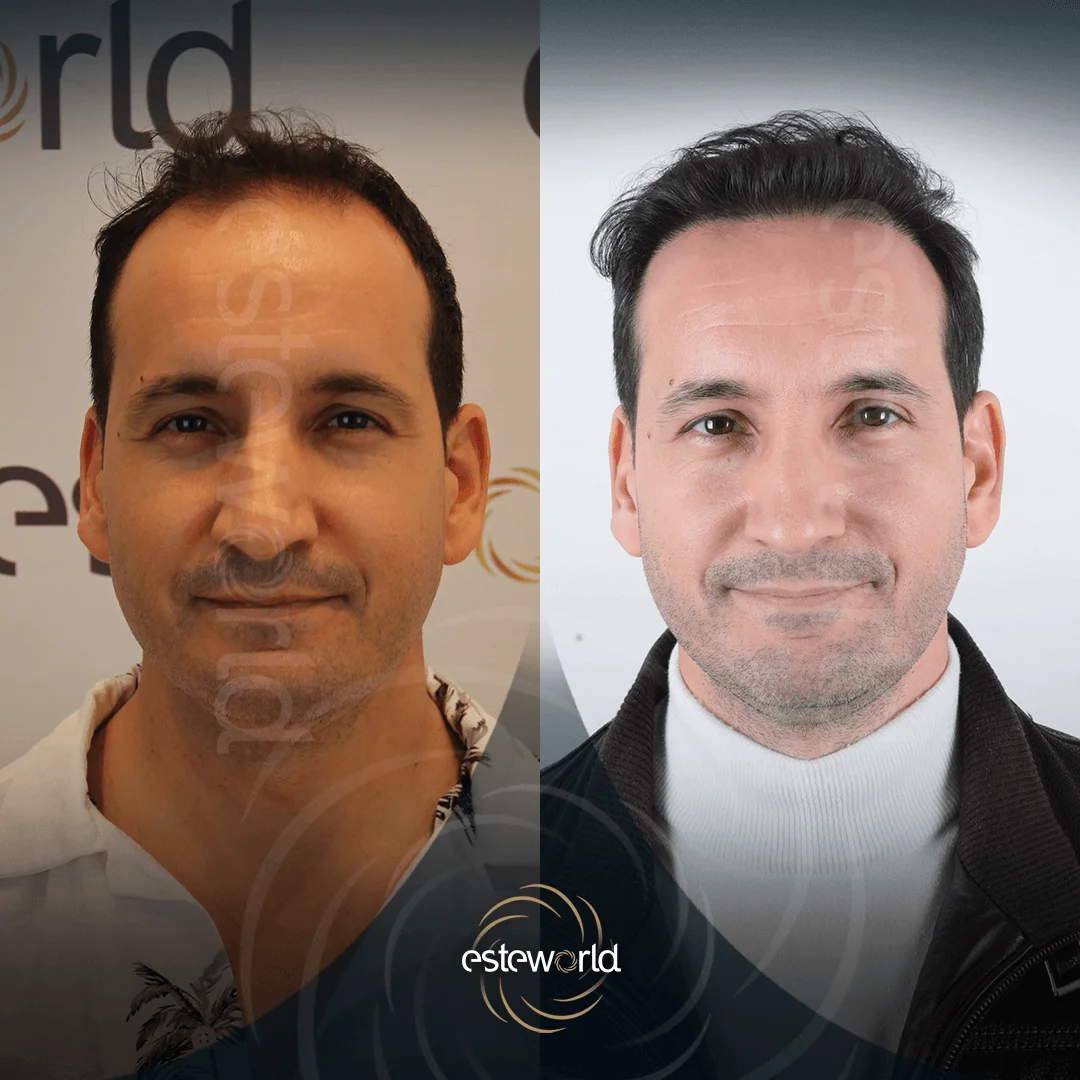
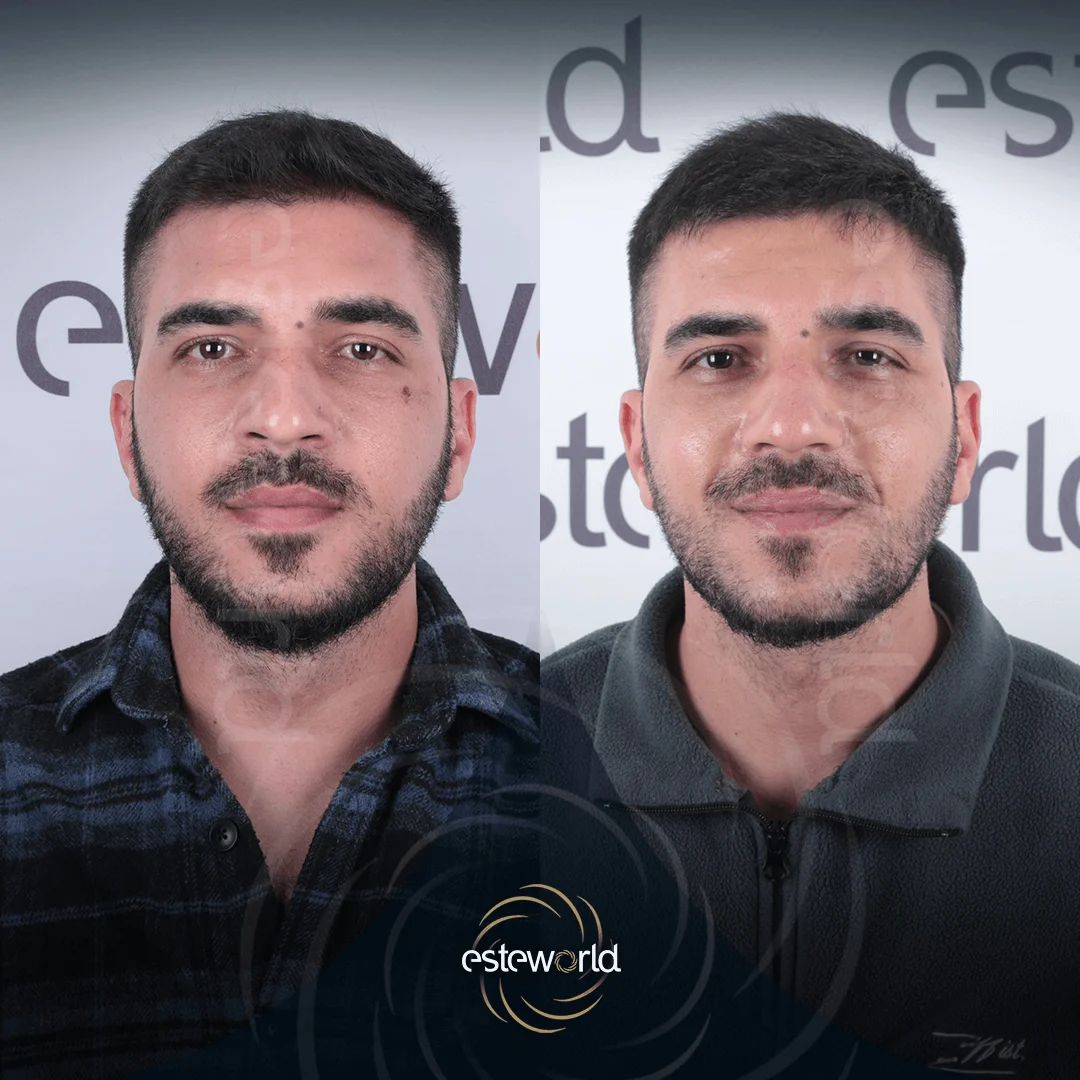
Get Your Free Afro Hair Analysis
Find out the best Afro hair transplant solution for your hair type with a free, personalised analysis by our specialist team.
All-Inclusive Afro Hair Transplant Packages
Enjoy a seamless treatment experience in Turkey with our all-inclusive Afro hair transplant packages, covering accommodation, transfers, and medical care.
Afro Hair Transplant DHI
- VIP transfer between airport–hotel–hospital
- 2 nights’ accommodation in a 5-star hotel
- DHI technique with natural Choi pens
- Pain-free operation thanks to sedation
- Personal interpreter
- Consultation with a doctor and an anesthetist
- Maximum graft policy
- Medications needed after the operation
- After care products
- Hair transplant certificate
- Post-operative medications
- 1 year of follow-up
Afro HAIR TRANSPLANT SAPPHIRE FUE
- VIP transfer between airport-hotel-hospital
- 2 nights accommodation in a 5-star hotel
- FUE technique with natural Sapphire tips
- Pain-free operation thanks to sedation
- Personal interpreter
- Consultation with a doctor and an anesthetist
- Maximum graft policy
- Medications needed after the operation
- After care products
- Hair transplant certificate
- Post-operative medications
- 1 year of follow-up
Real Afro Hair Transplant Reviews and Patient Experiences
6 Steps of the Afro Hair Transplant Process
Share your photos
Planning
Flight & Hotel
Afro Transplant Day
Aftercare & Medications
Home Monitoring Process
We’re With You After the Operation
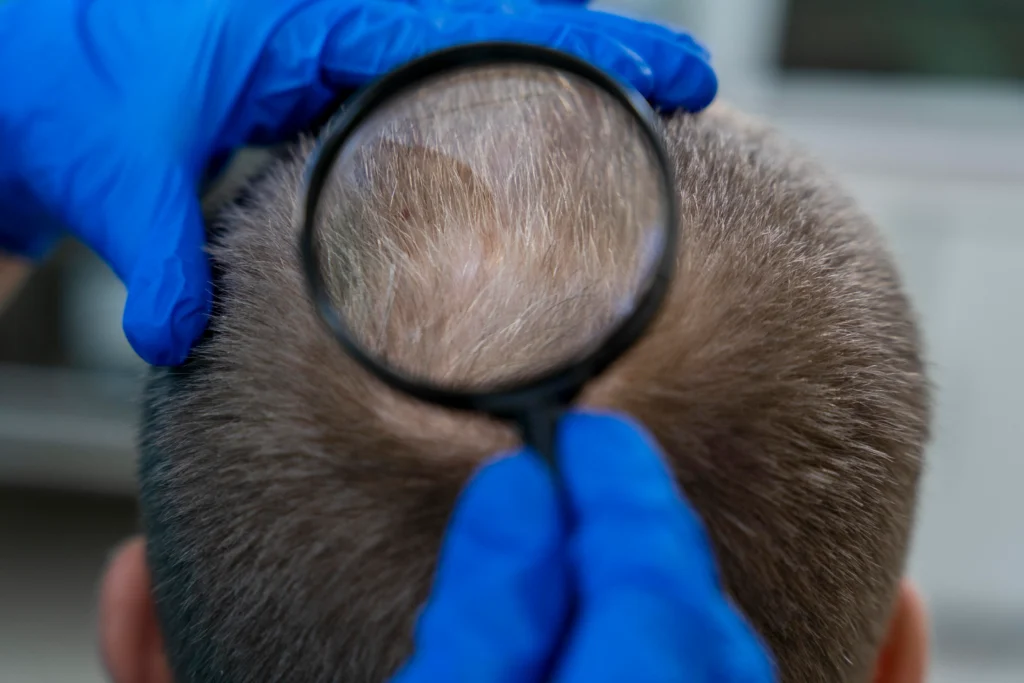
Post-Op Checkups
Regular medical checkups to ensure healthy recovery and hair growth.

Afro Hair Care Kit
Specially selected aftercare products designed for Afro hair texture

Online Doctor Support
Stay connected with your surgeon for guidance during the healing phase.
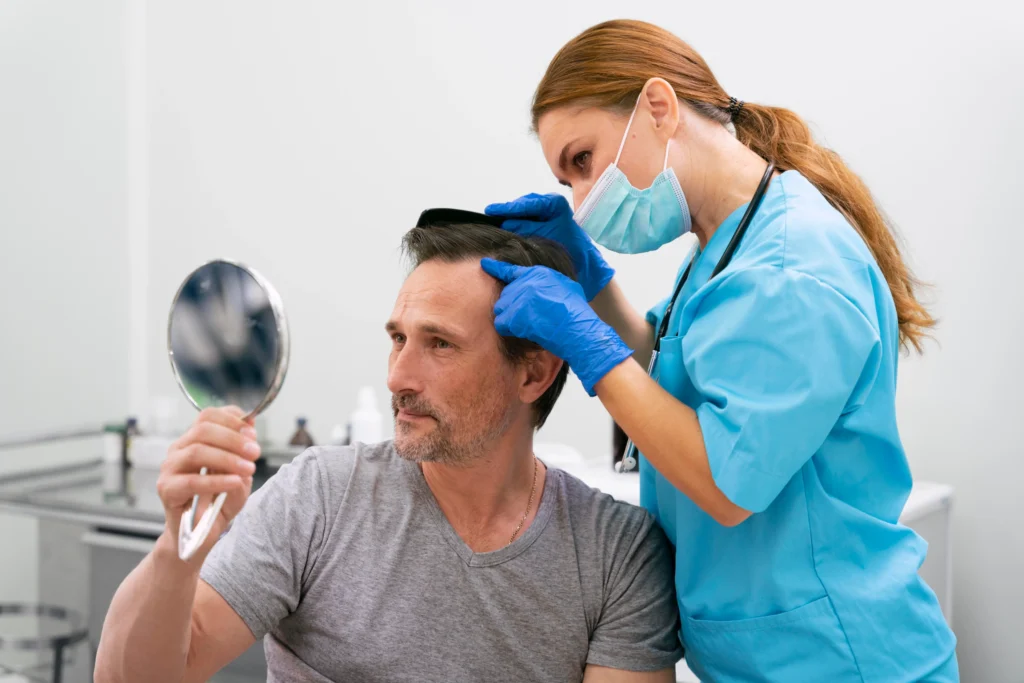
Result Tracking
Ongoing follow-up for natural, even, and long-lasting hair growth results
Frequently Asked Questions About Afro Hair Transplant in Turkey
What Structurally Differentiates Afro Hair from Other Hair Types?
Afro hair is distinct due to its coiled and spiral shape. The hair strands are not only curly above the scalp but also have a curved follicular structure beneath the skin. This makes the extraction and implantation process more technical. Additionally, Afro hair tends to be drier and more prone to breakage, requiring special attention during the planning and execution of hair transplantation.
Can Hair Transplantation Be Performed on Afro Hair?
Yes, hair transplantation can be safely and effectively performed on Afro hair types. However, due to the spiral follicle placement, it requires more experience and precision compared to straight hair. When performed with the right technique and expertise, highly natural and satisfactory results can be achieved.
Do Hair Transplants Work On a Afro Hair?
Hair transplant procedures are highly effective for Afro hair types as well. The key is accurate analysis of follicular exit angles and implantation that respects the natural curl pattern. This ensures both aesthetically pleasing and long-lasting results
What Is the Best Hair Transplant Method for Afro Hair?
The ideal method depends on the individual’s hair density and level of hair loss, but generally, DHI (Direct Hair Implantation) and specially adapted FUE techniques are preferred for Afro hair. DHI provides more precise follicle control, while FUE offers a broader solution for larger areas.
Is Afro Hair Transplant Painful?
No. Afro hair transplantation is performed under local anesthesia, so the procedure itself is not painful. Patients may feel slight tension or pressure, but this is usually short-lived. Mild sensitivity may occur in the first few days post-operation, which can be easily managed with the recommended care protocol.
Why Is Turkey a Popular Choice for Afro Hair Transplant?
Turkey is known for its advanced technology, experienced specialists, and internationally accredited clinics offering Afro hair transplants. The presence of teams specialized in Afro-textured hair, competitive pricing, and comprehensive patient services make Turkey a globally popular destination for this procedure.
Is Afro Hair Transplant Effective?
Yes, when performed using the correct technique and by experienced professionals, Afro hair transplant yields highly successful and permanent results. Proper planning of curl retention, hairline design, and density greatly enhances the outcome.
Can Hair Transplant Be Performed on All Afro Hair Types?
Absolutely. Hair transplant is possible for various Afro hair types. However, extra attention must be given to factors such as the curl tightness, subcutaneous follicle curvature, and graft orientation
How Long Does an Afro Hair Transplant Take?
The duration of an Afro hair transplant varies depending on the number of grafts and hair texture but typically takes 6 to 8 hours. Because of the curled follicle structure, the process may take slightly longer than for straight hair. It is usually completed in a single session.
What Is the Best Technique for Afro Hair?
Generally, DHI and FUE techniques (supported with specialized tools) are the most effective for Afro hair. DHI allows greater control over follicle direction, while FUE is ideal for broader transplant areas. The most suitable method should be determined through expert consultation.
Is Afro Hair Transplant Safe in Turkey?
Yes. Afro hair transplant procedures in Turkey are performed by specialized teams in clinics with high-tech infrastructure, ensuring safety and high success rates. Thousands of international patients undergo successful treatments in Turkey every year.
How much does a black hair transplant cost?
The cost of Black or Afro hair transplant depends on the method used, number of grafts, and the services offered by the clinic. A personalized assessment is necessary to determine an exact price. As of 2026 afro hair transplant prices in Turkey remain competitive globally, offering both affordability and high medical standards. A free consultation and hair analysis are recommended to receive an accurate quote.
Ready to Restore Your Natural Afro Hair?
Regain your natural texture and fullness with our expert Afro hair transplant team in Turkey.
Afro hair transplant in Turkey is a specialized procedure tailored to the unique texture and curl pattern of Afro hair.
Turkish clinics offer advanced techniques like FUE and DHI, modified to suit tightly coiled hair follicles. Surgeons with experience in Afro hair types ensure natural-looking results and minimal scarring. Patients benefit from affordable prices, personalized care, and inclusive packages that cover accommodation and transfers.
The procedure typically takes 6–8 hours, depending on graft count and hair density. Recovery is fast, and visible results begin in 3–6 months. Turkey’s reputation for high success rates makes it a top destination for Afro hair restoration.
What is Afro Hair Transplant?
Afro hair transplant is a surgical procedure designed to restore tightly curled or coiled hair using advanced hair restoration techniques.
This specialized method addresses the unique angle, thickness, and curvature of Afro-textured hair follicles. Surgeons often use FUE (Follicular Unit Extraction) to minimize scarring and ensure natural growth direction. It requires precision and experience due to the curved follicle structure beneath the scalp. The procedure is commonly sought by individuals experiencing hair thinning, receding hairlines, or traction alopecia. Results typically start to appear within 3–6 months, with full growth achieved by 12 months. A successful Afro hair transplant delivers natural-looking, permanent results tailored to textured hair types.
What Are the Types of Afro Hair?
Afro hair structure is categorized into different subgroups based on the level of curliness and strand texture. Each of these hair types requires a unique planning and technical approach during the hair transplant process. The most common Afro hair types include:
Curly Afro Hair
Curly Afro hair curls not only on the surface but also spirals beneath the skin at the root. This hair type typically has a dense, voluminous appearance and shows an “S” or “Z” shaped curl pattern. Due to its high volume and delicate structure, it requires extra attention and technical skill during graft extraction and channel opening, which can make curly Afro hair transplants more complex.
Wavy Afro Hair
Wavy Afro hair is less dense and more easily styled compared to the curly type. This hair type involves fewer complexities in terms of hair transplant procedures, and the operation process generally progresses more quickly and in a more controlled manner. Wavy Afro hair is easier to manage both surgically and during the healing process.
Straight Afro Hair
Straight Afro hair does not have curly or wavy characteristics and is generally a more resilient hair type. It is closer in structure to Caucasian and Asian hair types. The straight nature of the hair strand makes it easier to determine follicle orientation and the angle of implantation. Therefore, the planning and application process can be carried out in a manner similar to standard hair transplant procedures.
Coiled (Spiral) Afro Hair
Afro hair with a spiral curl pattern is both fragile and densely packed due to its intense twisting and coiling. This hair type requires more meticulous handling during the hair transplant process. During graft extraction and placement, a technique that aligns with the natural curl direction of the follicle should be used. However, with the correct surgical approach and an experienced team, successful results can also be achieved with this hair type.
Who is a Suitable Candidate for Afro Hair Transplant?
Afro hair transplant is an effective solution for individuals experiencing hair loss but whose condition hasn’t reached an advanced stage. The Afro hair type is genetically curly and spiral-shaped, causing the hair follicles to be positioned differently under the skin. Due to this unique structure, eligibility for a hair transplant must be evaluated more meticulously.
Ideal afro hair transplants candidates are typically those who:
- Have sufficient and healthy hair follicles in the donor area (especially the nape and side regions),
- Have a stabilized hair loss process,
- Have never undergone a hair transplant or have had an unsuccessful transplant in the past,
- Are in good general health and do not suffer from chronic skin conditions.
Especially in curly hair, before the transplant is performed, the direction, thickness, and spiral pattern of the hair should be analyzed in detail. The appropriate technique is selected based on this evaluation.
Afro Hair Transplant for Women
Women with Afro-textured hair may experience hair loss due to genetic factors, hormonal changes, tight braiding, and chemical hair treatments. Female-specific Afro hair transplant procedures are performed to restore aesthetic appearance and boost self-confidence. As in men, the nape area is used as the donor site; however, planning is more customized due to differences in hairline design and density expectations in women.
Afro hair transplant women is ideal for those who:
- Want more density in thinning but not fully bald areas,
- Experience temporary or permanent hair thinning,
- Suffer from traction alopecia (hair loss caused by pulling),
- Have lost hair due to chemical treatments.
Performing the transplant while preserving the natural curl pattern in Afro-textured women’s hair provides a much more natural-looking aesthetic result. DHI or FUE techniques can be planned individually.
Can Afro hair be transplanted?
Yes, Afro hair can be successfully transplanted using advanced techniques tailored to its unique curl pattern and follicle structure.
Specialists use methods like FUE (Follicular Unit Extraction) to carefully extract and implant the tightly coiled hair follicles. Afro-textured hair requires extra precision due to its curved roots, which can complicate the procedure if done by inexperienced surgeons. When performed correctly, results are natural-looking, with restored hairlines and even density. Recovery time is similar to other hair types, with visible growth starting around 3–6 months. Choosing a clinic experienced in Afro hair transplants is crucial for achieving safe and lasting outcomes.
Afro Hair Transplant for Men
Men with Afro-textured hair tend to experience early hair loss primarily due to genetic factors. Issues such as receding hairlines, thinning at the crown, or overall hair density loss can be effectively treated with Afro hair transplant. When planted at the correct angle, spiral-structured hair strands provide a denser appearance.
Afro hair transplant men is ideal for those who:
- Donor area quality,
- The extent of hair loss,
- The current degree of hair curliness.
Especially FUE and DHI techniques are frequently preferred for male Afro hair transplants because they allow careful extraction of spiral follicles. Correct adjustment of the implantation angle ensures a natural-looking result.
Which Techniques Can Be Used in Afro Hair Transplant?
Due to the spiral and curly form of Afro hair, special technical approaches are required for transplantation. This structure is more complex compared to straight hair since the roots curve under the skin, necessitating careful planning during graft extraction and placement. Therefore, Afro hair transplant techniques should be performed using methods that preserve the natural hair direction and minimize follicle loss.
Currently, the two most commonly used methods for individuals with Afro hair are:
- FUE (Follicular Unit Extraction) Hair Transplant Technique
- DHI (Direct Hair Implantation) Hair Transplant Technique
Both methods offer successful results by preserving the natural curly and spiral hair structure without damaging it. The choice of technique depends on the person’s hair type, area of hair loss, donor area quality, and expectations.
FUE Hair Transplant Technique for Afro Hair Transplant
FUE hair transplant is based on removing hair follicles one by one using a micromotor and implanting them into thinning areas through microchannels. However, FUE in Afro hair is more challenging compared to straight or slightly wavy hair because Afro hair follicles have a curved structure under the skin. This increases the risk of follicle damage during extraction. Therefore, when applying FUE to Afro hair, the exit angle and direction of hair follicles must be correctly analyzed. Experienced hair transplant centers in Turkey achieve successful results within Afro hair transplant using specially designed punch tips and angled channel opening techniques customized for Afro hair.
DHI Hair Transplant Technique for Afro Hair Transplant
DHI hair transplant (Direct Hair Implantation) is an advanced technique where grafts are implanted directly into the bald area using a special pen (Choi implanter) without opening any channels beforehand. DHI Afro hair transplant offers significant advantages due to the dense curly structure of hair strands, allowing precise control with the DHI pen. Especially the determination of the hair exit direction and density to ensure a natural appearance is easier to manage with this technique. DHI hair transplant helps preserve the natural curl pattern of Afro hair and can also accelerate the healing process. Therefore, DHI is increasingly preferred in Afro hair transplant procedures in Turkey.
How is Afro Hair Transplant Applied?
The implantation process for Afro textured hair requires detailed planning and a careful surgical approach. First, the donor area is evaluated, and the degree of curliness, exit angle, and density of the hair are analyzed. Then, hair follicles are taken one by one using suitable techniques like FUE or DHI. Because of the spiral form of follicles in Afro hair, special angles are used to prevent damage during implantation. After graft extraction, implantation is done in accordance with the natural hair direction. Many clinics in Turkey perform Afro hair transplant procedures with trained teams and advanced equipment, achieving high success rates.
What Should Be Considered Afro Hair Transplant Before and After?
Before Afro Hair Transplant
Planning before afro hair transplant is a meticulous process to achieve a successful result. The patient’s hair type should be analyzed, with curliness levels such as 4A, 4B, or 4C determined. Previous hair transplants, extent of hair loss, and skin type are also evaluated. Blood thinners should be stopped at least 7 days before the procedure, and smoking and alcohol consumption should be limited. Preparation is especially critical for Afro hair types because the spiral exit angle of hair follicles directly affects planning. Many centers in Turkey enhance Afro hair transplant standards with detailed preoperative education and analysis.
After Afro Hair Transplant
The post-transplant period is as important as the surgery itself. Contact with the transplanted area should be avoided for the first 72 hours; patients should sleep on their back and avoid intense physical activity. For afro hair, special attention is needed for the reattachment process of curly hair strands to the scalp. Hair washing protocols must be followed, and no products other than those recommended should be used. Due to the spiral follicle placement under the skin, redness or crusting might last a bit longer, which is normal. Final results appear within 9 to 12 months. With proper care, Afro hair transplant results offer a very natural and dense appearance.
What Are the Advantages of Afro Hair Transplant in Turkey?
Afro hair transplant in Turkey stands out globally in terms of both technical expertise and the number of experienced professionals. With years of experience in the field, advanced technology, and personalized planning services, Turkey has become an attractive medical tourism destination, especially for individuals with Afro-textured hair. The best Afro hair transplants in Turkey are performed through a process built on pre-procedure analysis, micromotor or DHI pen systems, follicular sensitivity, and a focus on natural appearance. Additionally, hair transplant clinics in Turkey offer comfortable treatment experiences for international patients with multilingual staff, sterile surgical facilities, and inclusive service packages (including accommodation). For those with Afro hair, hair transplantation in Turkey is not only an aesthetic solution but also an economically advantageous one.
Why Should I Have an Afro Hair Transplant in Turkey?
Afro hair transplant Turkey is globally recognized for its medical success rates and high patient satisfaction. Clinics in Turkey stand out with medical staff specially trained in Afro-textured hair, advanced technical equipment, and a personalized approach. For individuals with Afro hair, clinics in Turkey carefully apply not only technical expertise but also aesthetic considerations such as preserving the natural curly pattern, designing the hairline according to ethnic characteristics, and minimizing scarring. Moreover, Turkey is one of the few countries that can offer high-quality Afro hair transplant services at an affordable cost, making it an attractive destination for both domestic and international patients.
How much does an afro hair transplant cost in Turkey?
In 2026, an Afro hair transplant in Turkey typically costs between $2,400 and $5,000 USD.
This cost range includes specialized techniques suited to Afro‑textured hair and factors such as clinic reputation, graft count, and aftercare services.
Before proceeding, confirm what the fee covers (flight transfers, accommodation, follow‑up visits) and verify the surgeon’s experience with Afro hair transplants for safe and optimal results.
Cost of Afro Hair Transplant in Turkey 2026
2026 afro hair transplant in Turkey cost vary depending on the technique to be used (FUE or DHI), the number of grafts, the degree of hair curliness, and the scope of services provided by the clinic. Due to the spiral structure of Afro-textured follicles under the skin, the procedure requires greater sensitivity and technique, and therefore pricing is customized accordingly.
Across Turkey, Afro hair transplant procedures are carried out under high medical standards, by experienced teams, and with comprehensive patient services. This makes Turkey appealing for both local and international patients. As of 2026 when researching afro hair transplant costs, the service package contents (accommodation, transfers, consultations, and care services) and the clinic’s experience must be considered. For an accurate price, expert evaluation is essential since each individual’s hair structure and required graft number are different.











